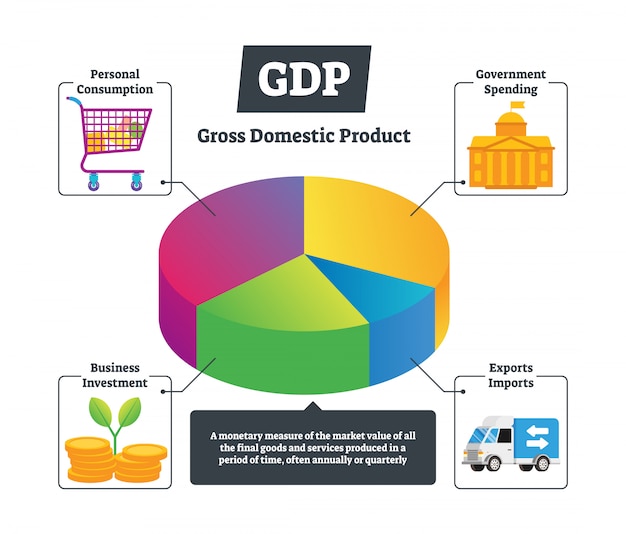Investing in Small-Cap Stocks: A Beginner’s Guide

Investing in small-cap stocks can offer high-growth potential for beginners, but it’s crucial to understand the risks and rewards of this market segment, including research, due diligence, and a diversified investment approach.
Have you ever wondered how to tap into the growth potential of smaller companies? Investing in small-cap stocks: a beginner’s guide to high-growth potential can be an exciting avenue, but it requires understanding and strategy. This guide will navigate you through the basics, risks, and rewards of small-cap investing, setting you up for informed decisions.
Understanding Small-Cap Stocks
Small-cap stocks represent companies with a relatively small market capitalization, typically ranging from $300 million to $2 billion. These companies are often in the early stages of growth, making them potentially high-growth investments.
However, it’s vital to grasp the nuances of small-cap stocks before diving in. Unlike their larger, more established counterparts, small-cap companies carry a unique set of opportunities and challenges.
What Defines a Small-Cap Company?
A small-cap company is classified based on its market capitalization, representing the total value of its outstanding shares. This classification helps investors differentiate between companies of varying sizes.
Why Consider Small-Cap Investments?
Small-cap stocks offer the potential for above-average returns due to their growth trajectory. These companies often have more room to expand compared to larger, more saturated markets. But, alongside this potential, come increased risks.
- Potential for high growth and significant returns.
- Opportunity to invest in emerging industries and innovative businesses.
- Diversification benefits for a portfolio.
Keep in mind that small-cap stocks can be more volatile and less liquid than large-cap stocks. Thorough research and due diligence are key to navigating this market effectively.
In conclusion, understanding what small-cap stocks are and why they might fit into your investment portfolio is crucial for any beginner. Weigh the risks and rewards carefully, and consider how these investments align with your overall financial goals.
Assessing the Potential Risks and Rewards
Investing in small-cap stocks isn’t without its challenges. It’s critical to evaluate both the potential benefits and the inherent risks to make informed investment decisions.
Small-cap stocks can outpace the returns of larger companies, but they also come with a higher degree of uncertainty. Balancing risk and reward is fundamental to successful small-cap investing.
Potential Upsides of Small-Cap Stocks
The allure of small-cap stocks lies in their potential to deliver substantial profits. These companies often operate in niche markets or are developing disruptive technologies, driving their growth.
Inherent Risks to Consider
Small-cap stocks can be more susceptible to market fluctuations, economic downturns, and company-specific issues. Lower trading volumes can also result in difficulty buying or selling shares at desired prices.

- Volatility and susceptibility to market fluctuations.
- Lower liquidity, making it harder to buy or sell shares.
- Increased risk of business failure due to limited resources.
By carefully weighing the possible gains against the potential losses, investors can develop a comprehensive understanding of the risk-reward relationship inherent in small-cap stocks. Knowledge and diligence are your best tools.
Ultimately, any successful investor understands the need to assess both the potential rewards and the risks involved in small-cap stock investing. Making well-informed decisions are crucial for long-term gains.
Researching Small-Cap Companies
Before investing in any small-cap stock, it’s essential to conduct comprehensive research on the company. This research helps you understand the business, its competitive landscape, and its growth prospects.
In-depth research can highlight promising opportunities and reveal potential red flags, empowering you to make well-informed investment decisions. Let’s explore the key areas of focus for your research.
Financial Statements and Key Metrics
Analyzing financial statements like income statements, balance sheets, and cash flow statements provides valuable insights into a company’s financial health. Key metrics like revenue growth, profitability, and debt levels can offer a glimpse into its performance.
Understanding the Business Model
It’s vital to understand how the company generates revenue, its target market, and its competitive advantages. This knowledge helps you assess whether the business model is sustainable and scalable in the long term.
- Read company annual reports and investor presentations.
- Analyze financial statements and key performance indicators.
- Understand the industry and competitive landscape.
Thorough research is an indispensable part of small-cap investing. It enables you to identify companies with solid fundamentals and strong potential for future growth, while avoiding those with significant risk factors.
In summary, researching small-cap companies requires a deep dive into their financials, understanding their business model, and appreciating their industry context. The time invested in research can greatly improve your investment outcomes.
Building a Diversified Small-Cap Portfolio
Diversification is a crucial strategy for mitigating risk in small-cap investing. By spreading your investments across multiple stocks, you can reduce the impact of any single company’s underperformance on your overall portfolio.
With a diverse portfolio, you can smooth out your returns and minimize potential losses, while still participating in the growth potential of the small-cap market. Let’s look at how to achieve optimal diversification.
Importance of Diversification
Diversification helps protect your portfolio from the volatility and unpredictability of individual small-cap stocks. Spreading your investments across different sectors and industries can further enhance this protection.
Strategies for Achieving Diversification
Consider investing in a range of small-cap companies across various sectors, such as technology, healthcare, and consumer discretionary. This reduces the risk of being overly exposed to any specific market trend or economic event.

- Invest in at least 10-15 different small-cap stocks.
- Diversify across different sectors and industries.
- Rebalance your portfolio periodically to maintain allocation targets.
A diversified small-cap portfolio is a fundamental risk-management strategy. It helps balance risk and reward, resulting in a more stable and sustainable investment experience.
In essence, achieving diversification in your small-cap portfolio is essential. By diversifying across different stocks and industries, you can build a portfolio that’s resilient to the ups and downs of the market.
Timing Your Entry and Exit Points
Knowing when to buy and sell small-cap stocks can significantly impact your investment returns. Entry and exit points should align with your investment strategy, risk tolerance, and the company’s performance.
Mastering timing involves a blend of technical analysis, fundamental analysis, and market sentiment. Understanding when to make your moves can enhance your portfolio’s gains.
Analyzing Market Trends
Monitor market trends and economic indicators to identify favorable periods for investing in small-cap stocks. Periods of economic growth and positive market sentiment can be particularly attractive.
Setting Price Targets and Stop-Loss Orders
Establish clear price targets for your investments and set stop-loss orders to limit potential losses. These tools help you adhere to a disciplined investment strategy.
- Monitor market trends and economic indicators.
- Set price targets and stop-loss orders.
- Re-evaluate your investment thesis periodically.
Prudent timing of entry and exit points can maximize your returns and minimize potential losses. However, remember that timing is not about perfection, but about making well-informed decisions.
In summary, timing your entry and exit points effectively requires keen observation of market trends and the discipline to stick to your pre-determined criteria. This will further assist you in long-term success.
Staying Informed and Adapting Your Strategy
The world of small-cap investing is constantly evolving, making it essential to stay informed about market developments, industry trends, and company-specific news. Adapting your strategy accordingly is essential for long-term success.
Remaining flexible and responsive to change ensures that your investment strategy remains aligned with your financial goals and the realities of the market. Let’s delve into how to stay in the know.
Following Market News and Industry Trends
Stay abreast of the latest developments in the small-cap market by following reputable financial news outlets, industry publications, and analyst reports. This helps you anticipate and react to market shifts effectively.
Re-evaluating Your Investment Thesis
Periodically review your investment thesis for each of your small-cap holdings. Are the company’s fundamentals still strong? Has the competitive landscape changed? Adjust your strategy as needed.
- Read financial news and industry publications regularly.
- Attend investor conferences and webinars.
- Seek advice from experienced financial advisors.
Staying informed helps you navigate the complexities of the small-cap market successfully. Adaptability ensures that your investment strategy remains optimized for the current environment.
In conclusion, constantly staying informed on news, trends, and company insights helps you evaluate your strategy. Keeping up to date and adapting accordingly are vital to grow your investment portfolio.
| Key Point | Brief Description |
|---|---|
| 🌱 Growth Potential | Small-caps can grow faster than large companies, offering higher returns. |
| ⚠️ Risk Management | Diversify your portfolio to mitigate the volatility of small-cap stocks. |
| 🔎 Research | Analyze financial statements to assess a company’s health and potential. |
| 📊 Market Timing | Monitor market trends to identify favorable entry and exit points. |
Investing in Small-Cap Stocks: A Beginner’s Guide to High-Growth Potential
Small-cap stocks represent companies with a market capitalization typically between $300 million and $2 billion. They are often younger, growth-oriented companies.
Small-cap stocks offer the potential for high growth and returns because they have more room to expand compared to larger, more established companies.
Risks include higher volatility, lower liquidity, and greater susceptibility to market fluctuations compared to large-cap stocks due to limited resources.
Diversify by investing in at least 10-15 different small-cap stocks across various sectors to reduce the impact of a single stock’s underperformance.
Monitor market trends and economic indicators to identify favorable periods. Set price targets and stop-loss orders to maintain a disciplined approach.
Conclusion
Investing in small-cap stocks can be a rewarding venture for beginners when approached with understanding and strategy. By grasping the basics, researching diligently, diversifying thoughtfully, and staying informed, you can navigate the complexities of this market and unlock its high-growth potential. Remember to always align your investments with your financial goals and risk tolerance.





